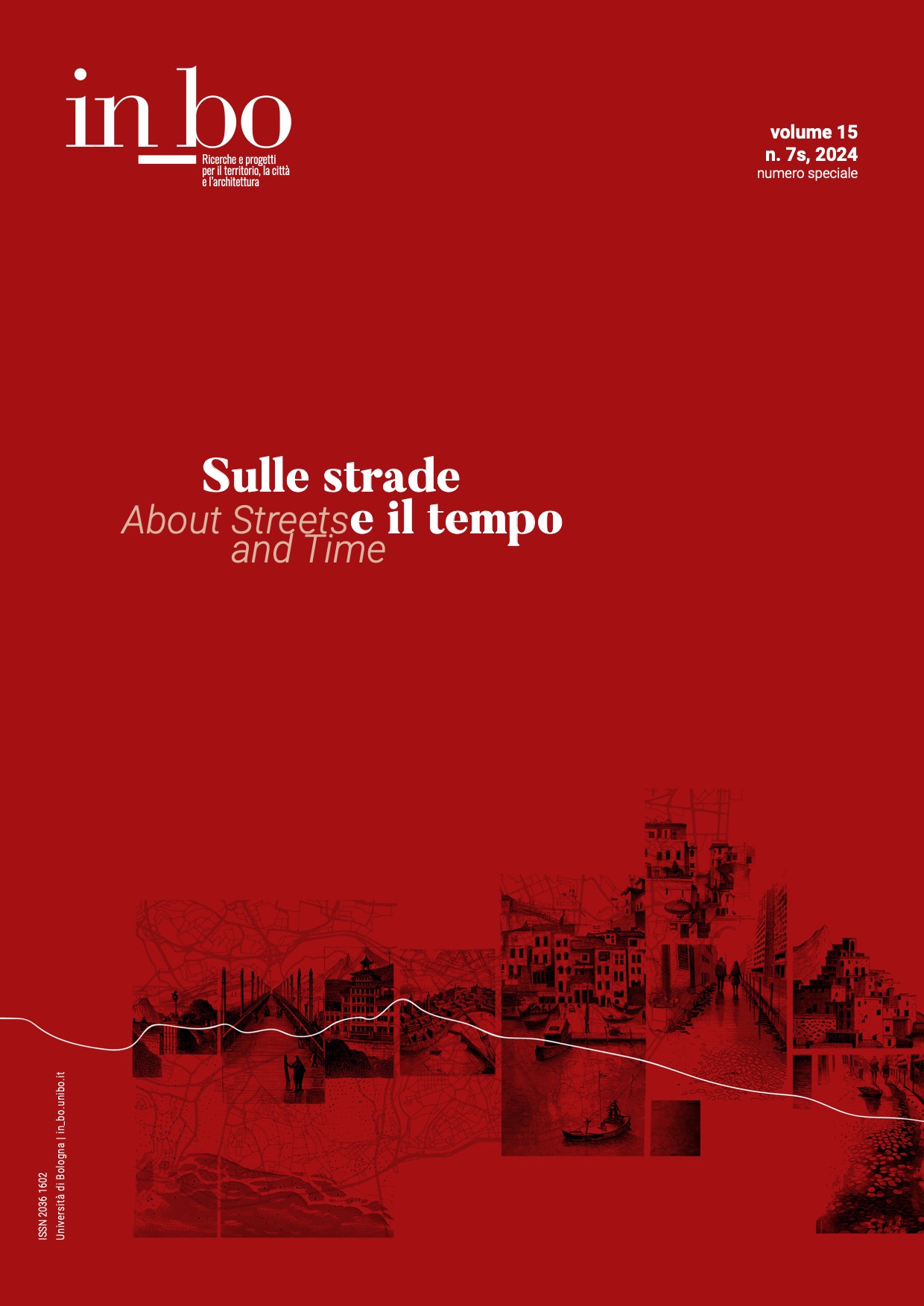EAT (in) THE CITY. An Adaptive Process of Transformation Applying the Tool of the Food Metaphor
DOI:
https://doi.org/10.6092/issn.2036-1602/20412Keywords:
food as a tool, adaptive transformation, evolutionary uses, social activities, placemakingAbstract
A successful urban project cannot be achieved without taking into account the sedimentary character of the places and the actions that take place there every day. We tried to read the mechanisms that trigger changes in order to plan the use of space through the spatial design of social activities related to food. In modern cities, moments of aggregation can be used as a design tool to create a "recipe" to re-analyse a place.
The research conducted applies the metaphor of food and its rituals as a tool to redefine street spaces and evolutionary relations between uses and the built environment in the city. Different devices are designed to bring participants to carry out the activities of their daily life in different spaces: the house is opening more and more to the city and vice-versa. It is a process that starts "from below," with simple and replicable technologies. It is not just a matter of building new spaces, but of highlighting and spatialising processes related to food. So, the project is not only a driver of change but also a key to understanding the complex relationships between the already existing urban devices and the processes that have always had a great influence on the city. The design devices go to work on the program of cities, introducing new spaces to eat together, in the street, they go to break those rigid boundaries that distinguish and separate uses based on ownership, introducing the hybrid form of sharing.
Downloads
Published
How to Cite
Issue
Section
License
Copyright (c) 2024 Roberta Ingaramo, Federica Carrero

This work is licensed under a Creative Commons Attribution-NonCommercial 4.0 International License.





